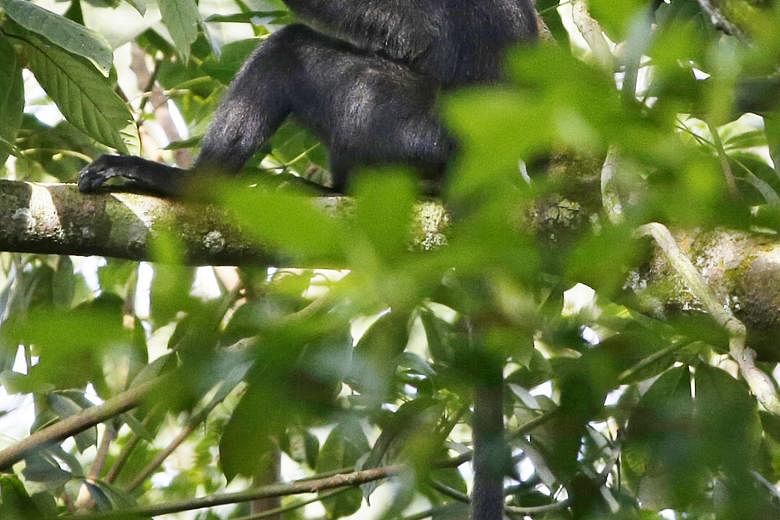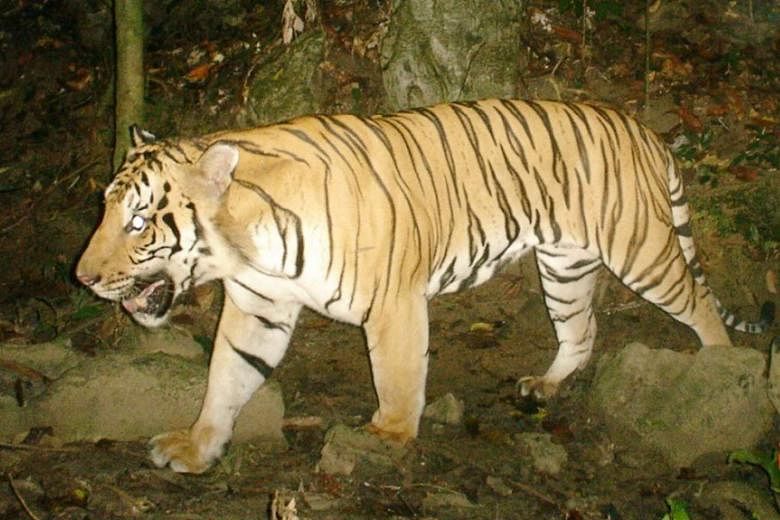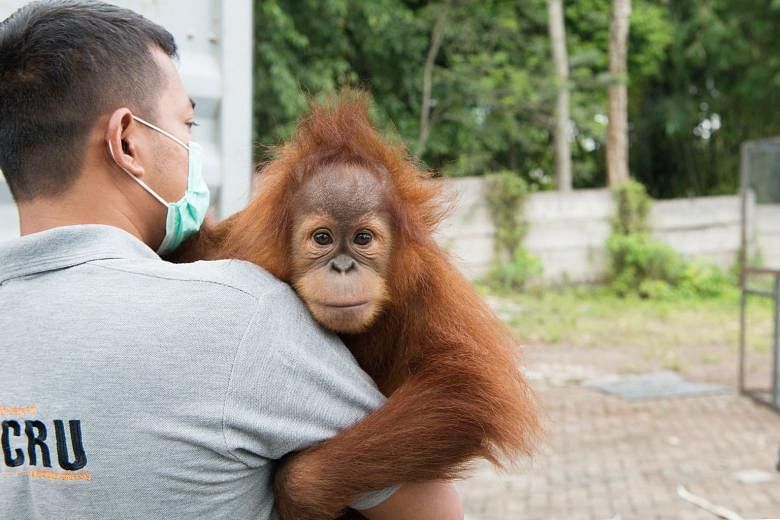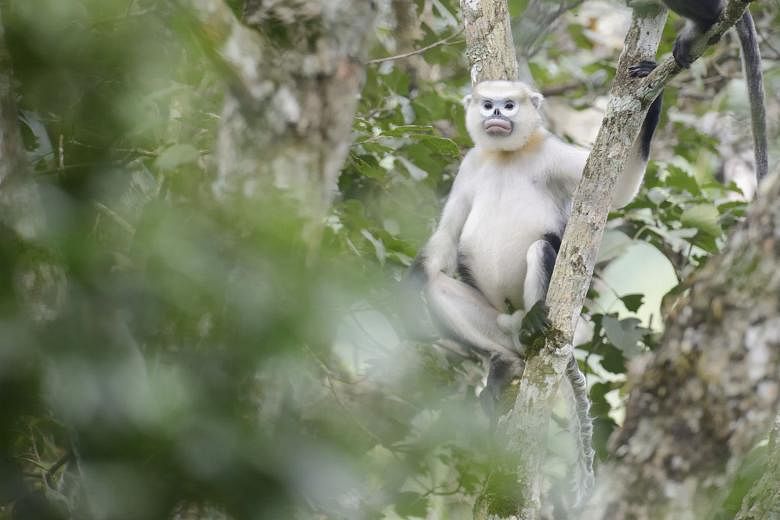RAFFLES' BANDED LANGUR
Where: Singapore
Conservation status: Critically endangered in Singapore
Unlike its boisterous cousin the long-tailed macaque, which can be found all across the island, the shy Raffles' banded langur is a lot more elusive.
There are fewer than 60 of these black-and-white monkeys in the wild in Singapore. This species is also found in Johor, but little is known about them there.
In August last year, WRS hosted a conservation strategy planning workshop for the Raffles' banded langur, which resulted in the first action plan to be formed to save the langur from extinction.
WRS supports local primatologist Andie Ang in implementing the plan.
Dr Ang is working with various stakeholders, including forestry officials and nature groups from Singapore and Malaysia.
She is also carrying out population, distribution and ecological studies and will propose measures to improve and protect what is left of the creature's habitats.
MALAYAN TIGER
Where: Malaysia
Conservation status: Critically endangered
According to estimates, there are fewer than 300 tigers left in the wild across the Malaysian peninsula. WRS supports the Malaysian Conservation Alliance for Tigers (MyCAT), which monitors the Yu River wildlife corridor, an important link between Taman Negara National Park - which spans Pahang, Terengganu and Kelantan - and the Titiwangsa Mountains, home to the two largest tiger habitats in Malaysia.
With WRS' support, MyCAT is able to sustain regular anti-poaching patrols, known as CAT walks, which remove snares and baits and report encroachment by trespassers and poaching to the MyCAT-run Wildlife Crime Hotline.
More than 1,000 volunteers from 33 countries, including Singapore, have protected 2,200km of the corridor so far. The gradual reduction in signs of poaching and encroachment over the years suggests that the initiative has been effective.
SUMATRAN ORANG UTAN
Where: Indonesia
Conservation status: Critically endangered
Ah Meng, the Sumatran orang utan much beloved in Singapore, was the Singapore Zoo's icon until its death in 2008 .
Its kind is critically endangered, and WRS is now on a mission to help the numbers recover.
WRS supports the Human Orangutan Conflict Response Unit, a specialist unit that administers immediate help to the orang utan by providing rescue, evacuation and release into protected forest areas in Indonesia's Aceh province.
A total of 51 orang utan have been rescued in the last two years. They were translocated and released back into protected forest.
As the only human-wildlife conflict response team in northern Sumatra, the unit also supports the Nature Conservation Agency of Aceh and North Sumatra in rescuing other wildlife, including gibbons, slow lorises, siamangs and Sumatran elephants.
TONKIN SNUB-NOSED MONKEY
Where: Vietnam
Conservation status: Critically endangered
The Tonkin snub-nosed monkey is considered to be among the 25 most endangered primates in the world.
It can be found in only about four small sites of tropical evergreen forests in karst limestone hills and mountains in north-east Vietnam.
WRS supports a conservation project headed by primatologist Le Khac Quyet, on what is likely to be the only viable population of Tonkin snub-nosed monkeys in the Khau Ca forest, a key habitat conservation area in Ha Giang province, Vietnam.
With WRS' support, the local team has been able to regularly monitor the monkey population and its habitat.
The human presence has also deterred encroachment and hunting in the area.
An estimated population of 104 individuals, including seven newborns, was observed last year.




